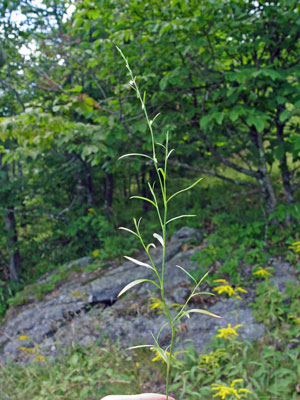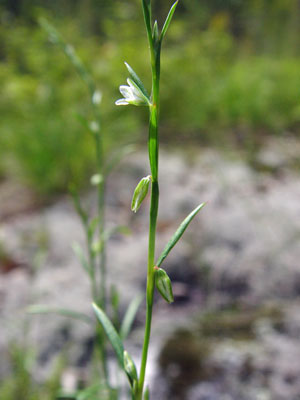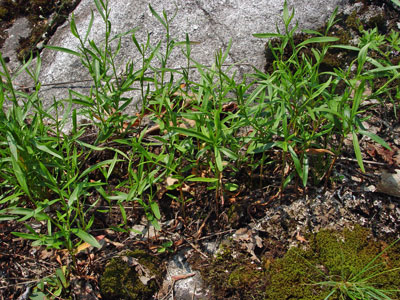DACF Home → Bureaus & Programs → Maine Natural Areas Program → Communities, Plants, and Animals → Rare Plants → Polygonum douglasii

Polygonum douglasii Greene
Douglas' Knotweed
- State Rank: S2
- Global Rank: G5
- State Status: Special Concern
Habitat: Rocky slopes and dry soil. [Rocky summits and outcrops (non-forested, upland)]
Range: Northwest Territory and British Columbia to New Mexico, Nebraska and Oklahoma, east through Ontario and New York to Vermont.

Aids to Identification: Members of the Polygonaceae are recognized by their tubular, sheathing stipules associated with the leaf blades. Polygonum, the knotweeds, are annual plants with 5 petaloid tepals. The flowers of Douglas' knotweed are characteristic in that they are borne on recurved stalks so that they nod toward the ground. P. douglassii differs from P. tenue in that the pecicels are recurved versus straight, the leaf blades are entire versus minutely serrate with two longitudinal folds. Also, the flowers and fruits on P. tenue are erect or ascending, while those of P. douglasii are nodding.
Ecological characteristics: Douglas' knotweed grows in exposed places (in Maine, on hillside ledges), often with very little other vegetation.

Phenology: Flowers June - September.
Family: Polygonaceae
Synonyms: Polygonum douglasii<. Greene var. latifolium<. (Engelm.) Greene.
Known Distribution in Maine: This rare plant has been documented from a total of 9 town(s) in the following county(ies): Oxford, York.
Reason(s) for rarity: Southeastern limit of range.
Conservation considerations: Known populations are small and subject to the vagaries of small populations like random fluctuations or localized disturbance events.